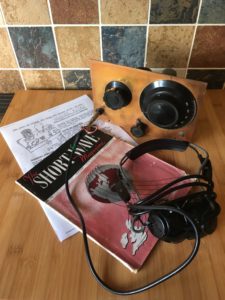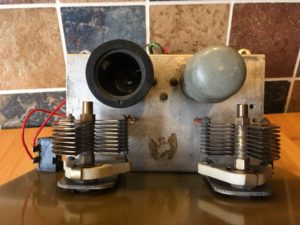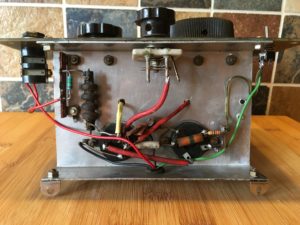Back in the mists of time, before even yours truly came into the world, people had far less money than they have now and radio equipment and parts were relatively expensive. Magazines such as Modern Wireless, Popular Wireless, Wireless Constructor, Amateur Wireless, Practical Wireless and many others were published monthly if not weekly. Each had articles describing how to build your own basic radio, but remember parts were still very expensive. Most radios were no more than two or three valves; those which relied on headphones and batteries, were often just one. Remember that at one time, most of the things we bought were made in England, not Japan, Hong Kong, Taiwan or China.
As time went on, commercial equipment became more affordable but people with an interest in radio still preferred to build their own ‘homebrew’ equipment. Many started with a simple receiver such as the Globe King 100A featured here.
The supplied leaflet proclaims: ‘Economical Operation – Maintenance is practically nil and the replacement batteries will only cost a few shillings a year. For this you will get day in day out entertainment, news from America, music from Brazil, sport from Australia, and all the thousands of amateurs talking to each other across the world. The “Globe King” opens up a new world of discovery, adventure and experiment. Start this best hobby of all today and never again will you have a dull moment.’ Having read that I’d imagine many would hastily post a cheque or postal order off for their kit, or they could order the ‘B’ version which was built and tested.
The little Globe King 100A here, belonged to a old friend who passed away in 2021. It’s mostly original and you can still see the little shield in the middle of the chassis. It needs 3V for the valve heater and 90V for the HT, a pair of high impedance headphones and a decent aerial and earth. These little regenerative receivers need ‘driving’ as the controls interact; you have the main tuning (bandset), fine tuning (bandspread) and reaction controls to master. There’s no calibrated tuning dial on the radio, so you’ll need to plot a graph with frequency (or wavelength if you’re old fashioned) against the 0 to 180, or whatever dial you have. You could use a sensitive frequency counter to cheat if you wish. The radio originally came with three coils covering the main broadcast frequencies of the world.
There’s a great deal of interest in these simple radios, as they can perform quite well once you get the hang of them. There’s a great source of information and more photos on the Vintage Radio website, so I won’t duplicate it here.
If anyone has a really good copy of the instructions, I’d welcome a high quality scan of it please. You can either keep your eye out for a Globe King or build something similar yourself along the same lines; the circuit is quite standard. You might well want to move up to the Eddystone All World Two or similar, later on.
I’m going to enjoy this little radio, just the way it is.


